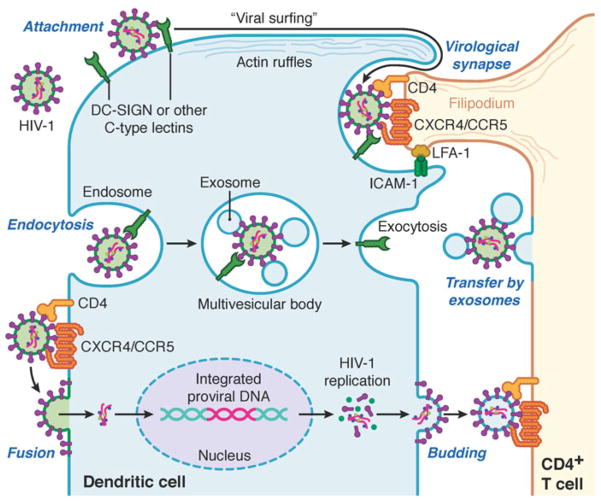Fig. 4.1.
Summary of the mechanisms of DC-mediated HIV-1 transmission to CD4+ T cells. Incoming HIV-1 (virions with green membrane) can be transmitted from DCs to CD4+ T cells by three distinct mechanisms. First: Trans-infection via the virological synapse: HIV-1 can bind to DC-SIGN on the DC surface, “surf” along actin ruffles, and become polarized to a pocket structure on the cell surface. When DC contact with a CD4+ T cell is established, the virological synapse is formed and stabilized through interactions between ICAM-1 and LFA-1. The CD4+ T cell extends a filipodium, via actin cytoskeleton rearrangements, into the pocket on the DC surface to capture the HIV-1. Second: Trans-infection via the exosome secretion pathway: Endocytosed HIV-1 can converge with the exosome secretion pathway in the multi-vesicular bodies and HIV-1 can be released in association with exosomes to infect nearby CD4+ T cells. Third: Cis-infection: HIV-1 can enter the DC by fusion and undergo its complete replication cycle and newly formed infectious HIV-1 (virions with blue membrane) bud from the DC and is able to infect nearby CD4+ T cells. DC-SIGN dendritic cell-specific intercellular adhesion molecule 3-non-grabbing integrin, ICAM-1 intercellular adhesion molecule-1, LFA-1 leukocyte function-associated molecule-1

